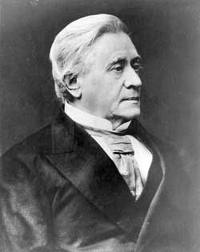-
(b.) -1797 December 17(d.)1878 May 13
Bio/Description
During his lifetime, he was highly regarded. While building electromagnets, Henry discovered the electromagnetic phenomenon of self-inductance. He also discovered mutual inductance independently of Michael Faraday, though Faraday was the first to publish his results. The SI unit of inductance, the henry, is named in his honor, as are derivative units such as the millihenry and microhenry. Henry's work on the electromagnetic relay was the basis of the electrical telegraph, invented by Samuel Morse and Charles Wheatstone separately. Henry excelled at his studies (so much so, that he would often be helping his teachers teach science) and in 1826 he was appointed Professor of Mathematics and Natural Philosophy at The Albany Academy by Principal T. Romeyn Beck. Some of his most important research was conducted in this new position. His curiosity about terrestrial magnetism led him to experiment with magnetism in general. He was the first to coil insulated wire tightly around an iron core in order to make a more powerful electromagnet, improving on William Sturgeon's electromagnet which used loosely coiled uninsulated wire. Using this technique, he built the strongest electromagnet at the time for Yale. He also showed that, when making an electromagnet using just two electrodes attached to a battery, it is best to wind several coils of wire in parallel, but when using a set-up with multiple batteries, there should be only one single long coil. The latter made the telegraph feasible.
-
Date of Birth:
1797 December 17 -
Date of Death:
1878 May 13 -
Gender:
Male -
Noted For:
Inventor and first secretary of the Smithsonian Institute and a founding member of the National Institute for the Promotion of Science -
Category of Achievement:
-
More Info:


